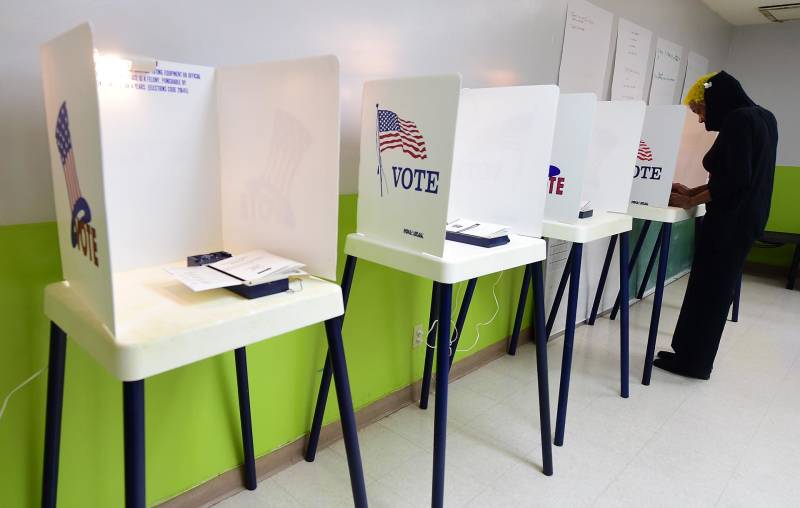The date of California's presidential primary has swung back and forth between the early and late end of the campaign season, reflecting conflicting desires to keep election costs low while also remaining relevant nationally.
Until 1994, California held its primary elections in June, but still occasionally hosted competitive primaries, including tight races on the Democratic side in 1968, 1984 and 1992.
To give the state a more permanent say in the process of selecting nominees, lawmakers moved the state's primary election to March. It would remain there until 2005, in the meantime giving key wins (and huge delegate totals) to George W. Bush in 2000 and John Kerry in 2004.
But legislators felt the large gap between the March primary and the November general election was contributing to increasing campaign costs, so they pushed the primary back to June.
As the 2008 election approached, calls to make the state a national player in both primaries led to the passage of SB113, which split the state's primaries. Over 57 percent of registered Californians voted in the presidential primary in February (the earliest election in state history); three months later in June, only 28 percent of registered voters weighed in on state propositions and races.
Counties Behind Most Recent Change
Whether it's a race for the state Legislature, president or a ballot initiative, California counties are largely responsible for shouldering the cost of elections in the state.
"The state has been unwilling to pick up any election costs," says Kim Alexander, president of the California Voter Foundation, a nonprofit that works to improve the state's election process. "It's something a lot of people don't realize. It's a real barrier to voter expansion and participation in California."
The statewide cost of the February 2008 presidential primary was over $96 million. Neal Kelley, registrar of voters in Orange County, said the June 2008 statewide election cost roughly the same.
"We have to prepare the election the same way, whether we have one item on the ballot or 15 contests on the ballot," says Kelley. "I always tell people we have to prepare for 100 percent turnout, even if we don't get 100 percent turnout."
Having to duplicate the cost of everything from ballot materials to polling place staff led California counties to support a 2011 law that consolidated the state and presidential primary and moved it back to June.
Consolidated March Primary a Middle Ground?
The results of the move to a consolidated June primary in 2012 were predictable. Turnout of registered voters plummeted to 31 percent in a year when the Democratic nominee for president was an incumbent, and the Republican race was decided by June.
Is there a happy medium between price and participation for California's presidential primary?
Kim Alexander says the state could consider going back to a consolidated March primary, like it had in 1996, 2000 and 2004.
"It was consolidated, all the contests were on the ballot, so we didn't have two primaries," she says. "And we had a lot of voter excitement and participation."
The state will again have to weigh whether a place on the crowded national stage is worth the effects of a drawn-out, eight-month general election campaign, or whether the state's top-two primary has already altered the equation on primary spending.
On the other hand, if future primaries play out like 2016, California officials may be content with remaining at the end of the primary campaign trail, taking a chance that they'll end up in the middle of the action.
